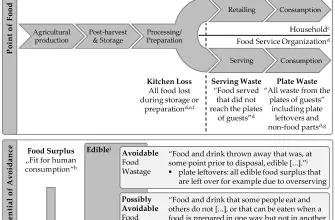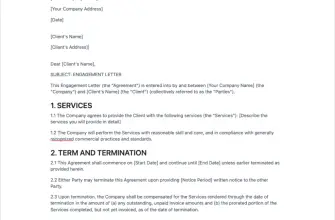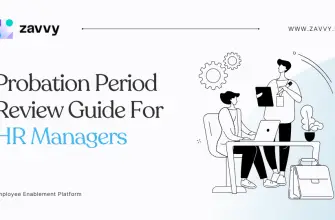Unauthorised absence from work refers to the situation where an employee is absent from work without informing their employer or obtaining their approval beforehand.
It can happen for a variety of reasons, including personal emergencies, family responsibilities, medical issues, or simply failing to show up for work without a valid excuse.
Unauthorised absence can be a major issue for employers because it disrupts the work schedule, reduces productivity and profitability, and lowers team morale.
Dealing with unauthorised absence from work requires a delicate balance between empathy and firmness. To support their employees and maintain productivity, employers must understand the reasons for an employee’s absence, offer solutions, enforce company policies and regulations, and ensure that the work is not affected.
In this article, we will go over the key steps that employers can take to effectively deal with unauthorised absences from work.
Understanding the Reasons for Unauthorised Absence from Work

Before taking any action, employers must investigate the reasons for the absence. Employers can achieve this by either having a formal conversation with the employee or making an informal inquiry with their coworkers or supervisors.
It is critical to approach the conversation with empathy and an open mind and to avoid assuming or jumping to conclusions.
Employers can ask the following questions during the conversation to better understand the reasons for the absence:
- What were the circumstances that led to your absence?
- Did you inform anyone in advance about your absence?
- Do you have any ongoing personal or health issues that may affect your attendance?
- Do you feel satisfied with your job and work environment?
- Is there anything that we can do to support you or help you manage your work-life balance?
The answers to these questions can provide important insights into the employee’s situation and assist employers in determining the best course of action.
Employers must document and keep confidential conversations about sensitive employee information.
Check our Guide to apply for a UK Spouse Visa
Setting Clear Attendance Policies
Employers must establish clear attendance policies that specify the expectations and requirements for employees’ attendance and absence reporting to prevent unauthorised absences from work.
Communicate policies to all employees and review them regularly to align with the company’s goals and values.
The attendance policies should include the following elements:
1. Attendance requirements
Employers should specify the minimum attendance requirements for employees, such as the number of working hours, days of the week, or shift schedules.
During the onboarding process, employers should communicate this to all employees and review it regularly to ensure everyone understands the expectations.
2. Reporting procedures
Employers should establish a system for reporting absences, such as a phone call, email, or online form. The system should be simple to use and available to all employees, regardless of location or schedule.
Require employees to report absences as soon as possible, preferably before their shift begins or as soon as they become aware of the need to be absent.
3. Approval Process
Employers should specify who approves or denies absence requests and what criteria are used to evaluate them.
Communicate this process to all employees and apply it consistently and fairly to avoid the perception of favouritism or discrimination.
4. Consequences of unauthorised absence
Specify consequences of unauthorized absence: disciplinary actions, loss of pay or benefits, or termination.
Communicate consequences clearly to all employees and apply them consistently and fairly to hold everyone accountable for attendance.
5. Exceptions and accommodations
Specify accommodations for employees with special needs.
Adjustments must comply with legal obligations and not affect productivity.
Communicating Expectations and Consequences

Clear communication is essential to prevent unauthorised absences from work. Clear and regular communication of expectations and consequences is crucial for employee compliance.
Employers can use various communication channels to convey their message, such as:
Employee handbook
Include attendance policies in the handbook, and give copies to employees during onboarding. The handbook should be written in plain language and include examples and scenarios to illustrate the policies.
Meetings and training sessions
Employers should conduct regular meetings and training sessions to reinforce their attendance policies and provide updates or clarifications as needed. These sessions can also provide an opportunity for employees to ask questions or raise concerns.
Reminders and notifications
Automated reminders can notify employees of shifts or reporting deadlines. These reminders can help prevent forgetfulness or confusion and improve attendance rates.
Performance evaluations
Employers can include attendance and punctuality as part of their performance evaluation criteria and provide feedback to employees on their attendance records. This can help employees understand the importance of attendance and motivate them to improve their attendance rates.
In addition to communicating their expectations, employers should also communicate the consequences of unauthorised absences clearly and consistently.
Employers must ensure that the consequences are applied fairly to all employees, regardless of position or tenure. They should also provide employees with an opportunity to appeal or dispute the consequences.
Addressing The Root Causes Of Unauthorised Absence

Unauthorised absence can have various underlying causes, such as personal issues, health problems, work-related stress, or a lack of motivation.
Employers must address the root causes of unauthorised absence and provide appropriate support and resources to their employees to avoid it becoming a continuing problem.
Here are some strategies that employers can use to address the root causes of unauthorised absences:
1. Employee Assistance Programs (EAPs)
EAPs are confidential counselling services that provide employees with support and guidance on personal, family, and work-related issues.
Employers can offer EAPs to their employees as part of their benefits package and promote their use as a way to address the underlying causes of unauthorised absence.
2. Flexible work arrangements
Employers can offer flexible work arrangements, such as working from home, flexible hours, or job sharing, to employees who have personal or family responsibilities that require their presence outside of work.
These arrangements can help employees balance their work and personal responsibilities and reduce the probability of unauthorised absence.
3. Health and wellness programs
Employers can offer health and wellness programs, such as gym memberships, healthy food options, or stress management workshops, to promote employee health and well-being.
These programs can assist employees in managing health issues or work-related stress, as well as reduce the likelihood of unauthorised absences.
4. Communication and feedback
Employers should maintain open and honest communication with their employees and provide them with regular feedback on their performance and attendance.
This can help employees feel valued and motivated to come to work, as well as address any concerns or issues that may result in an unauthorised absence.
5. Training and development
Employers can offer training and development opportunities to their employees to enhance their skills and knowledge, and provide them with a sense of purpose and career growth.
This can improve employee engagement and reduce the likelihood of unauthorised absence.
Employers can create a supportive and healthy work environment that promotes attendance and productivity by addressing the root causes of unauthorised absence. It also shows that the employer values and cares about their employees’ well-being and is committed to their success.
Providing Adequate Coverage and Assistance
Employers need to ensure that adequate coverage and support are available to prevent work disruptions and minimize the impact of unauthorised absences on the company’s operations.
Here are some strategies that employers can use to provide adequate coverage and support:
- Cross-training: Employers can cross-train their employees to perform multiple roles or tasks within the team or department. This can help ensure that someone is always available to cover for an absent employee and avoid work disruptions.
- Temporary staff: Employers can hire temporary staff or contractors to cover for an absent employee, especially in critical or specialized roles. This can help to ensure that the work continues uninterrupted and has the least possible impact on the team or department.
- Job sharing: Employers can arrange for two or more employees to share the same role or responsibilities, either on a permanent or temporary basis. This can help ensure that someone is always available to cover for an absent employee and avoid work disruptions.
- Flexible workload: Employers can adjust the workload or deadlines of the team or department to accommodate an absent employee or redistribute the workload among the remaining employees. This can help ensure that the work continues without interruption and prevent stress.
- Supportive management: Employers should provide supportive management to the remaining employees, especially during periods of unauthorised absence. This can include regular check-ins, clear communication, and acknowledgement of their efforts and contributions.
By providing adequate coverage and support, employers can minimize the impact of unauthorised absences on their operations and maintain productivity and efficiency. It also shows that the employer values and cares about the success of their team or department and is committed to their success.
Enforcing Consequences For Unauthorised Absence
While employers must provide support and resources to address the underlying causes of unauthorised absence, employees who engage in this behaviour must also face consequences.
This can help to keep the attendance policy’s integrity and prevent other employees from practising unauthorised absence.
Here are some strategies that employers can use to enforce consequences for unauthorised absences:
Clear attendance policy
Employers should have a clear attendance policy that outlines the expectations and consequences for unauthorised absences. Employers must ensure that the policy is consistently enforced and that it is communicated to all employees.
Record keeping
Employers should maintain accurate records of employee attendance and absence. This can assist in identifying patterns of unauthorised absence and providing evidence for disciplinary action.
Progressive discipline
Employers should use a progressive discipline approach for unauthorised absence. This involves a series of disciplinary actions that increase in severity for repeated unauthorised absences, such as verbal warning, written warning, suspension, and termination.
Fairness and consistency
Employers should ensure that disciplinary actions are fair and consistent across all employees. This can help prevent claims of discrimination or favouritism.
Appeals process
Employers should have an appeals process in place for employees who disagree with disciplinary actions. This can give employees a chance to express their concerns and provide additional evidence.
Employers can maintain the integrity of the attendance policy and prevent other employees from absences by enforcing consequences for unauthorised absences. It also shows that the employer values and respects the attendance policy and is committed to maintaining a productive and efficient workplace.
Employer Should Use an Attendance Bonus to Encourage Employees
An attendance bonus can be an effective way to incentivize employees to improve their attendance.
However, employers should be careful to ensure that the bonus does not violate applicable laws or create unintended consequences, such as incentivizing employees to come to work when they are sick or otherwise unable to perform their job duties.
What should I do if I need to take time off work unexpectedly?
You should follow your employer’s attendance policy and notify your supervisor as soon as possible. If you have a medical condition or other personal emergencies, you may need to provide documentation to support your absence.
Can an employer take disciplinary action against an employee?
It depends on the employer’s attendance policy and the specific circumstances. If the employer’s attendance policy allows for excused absences for personal emergencies, the employee may be protected from disciplinary action.
However, if the absence is not excused under the attendance policy, the employer may be able to take disciplinary action.
Conclusion
Dealing with unauthorised absences can be a difficult task for employers, but it is a necessary part of creating a productive and efficient workplace.
Employers should strive to address the underlying causes of unauthorised absence, provide support and resources to employees facing personal or medical issues, and enforce consequences for employees who engage in this behaviour.
To effectively address unauthorised absences, employers should have a clear attendance policy, communicate the policy to all employees, and ensure that the policy is consistently enforced.
By implementing these strategies, employers can create a positive and productive workplace culture where attendance is valued and supported. It also shows that the employer values and respects their employees and is committed to creating a fair and inclusive workplace for all.









